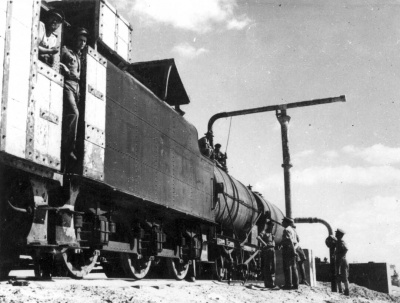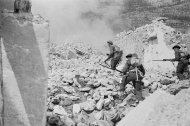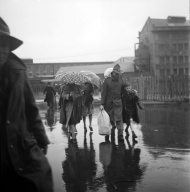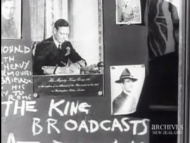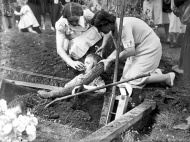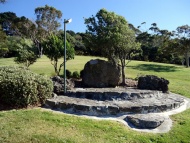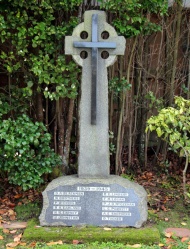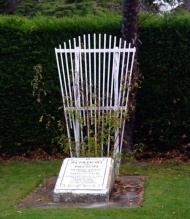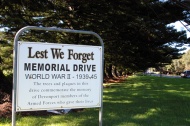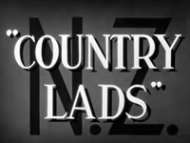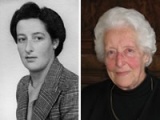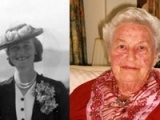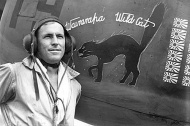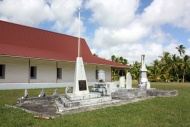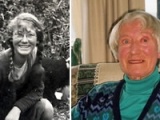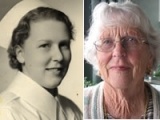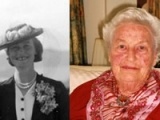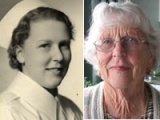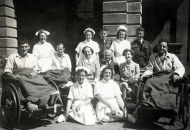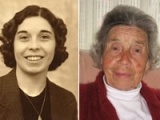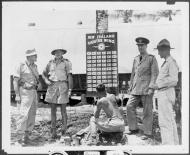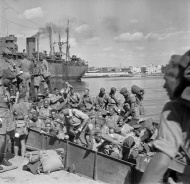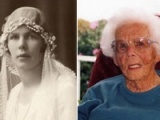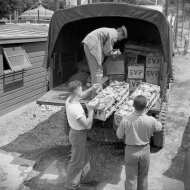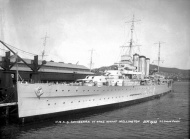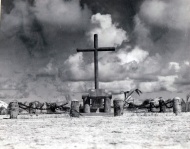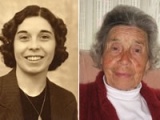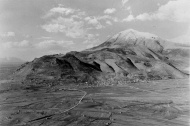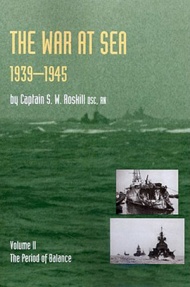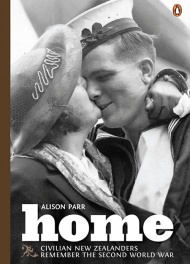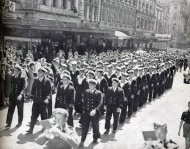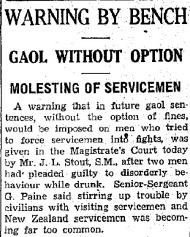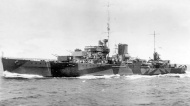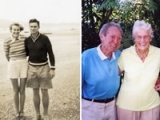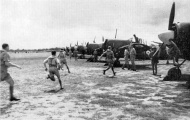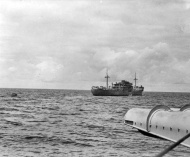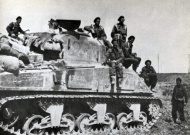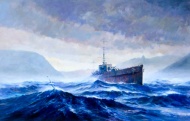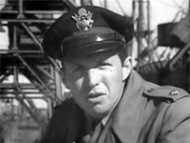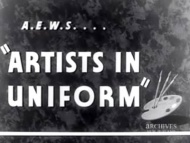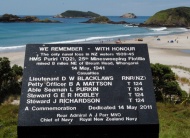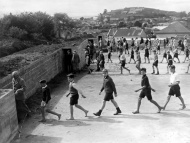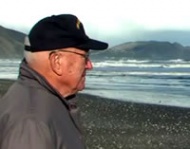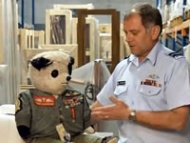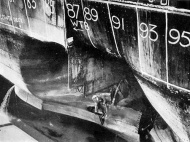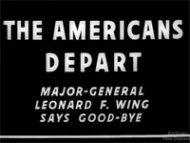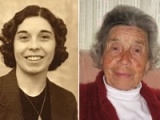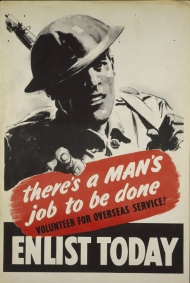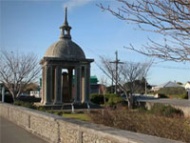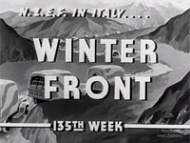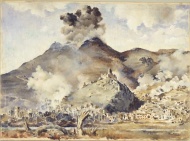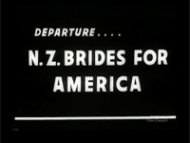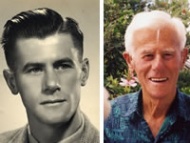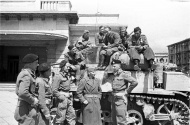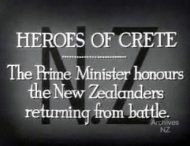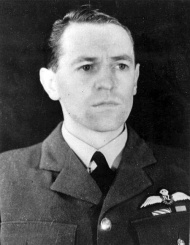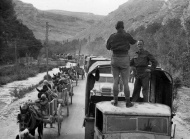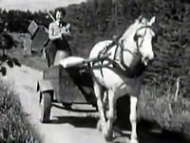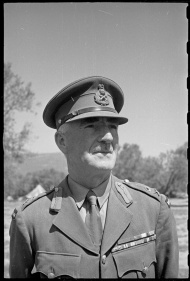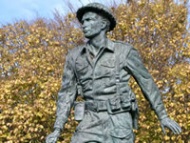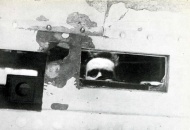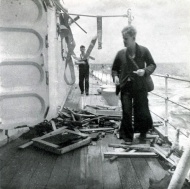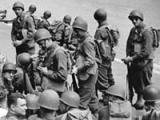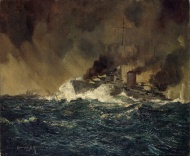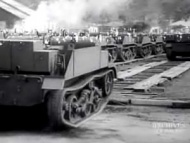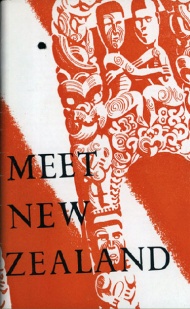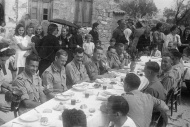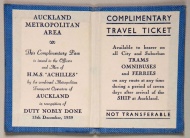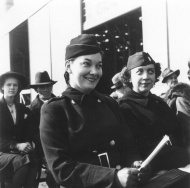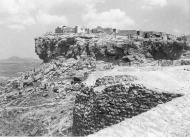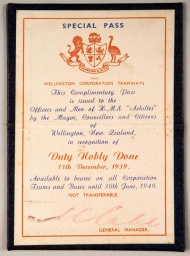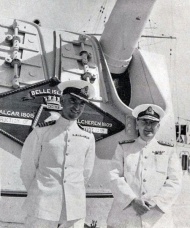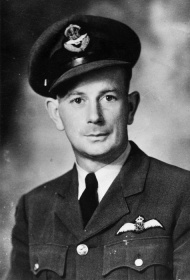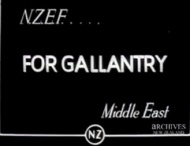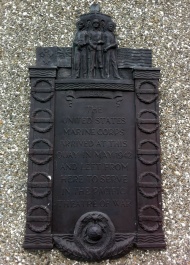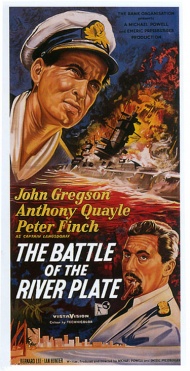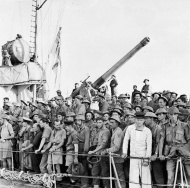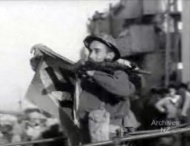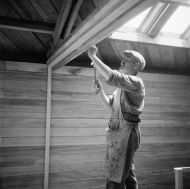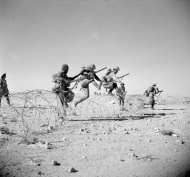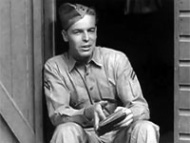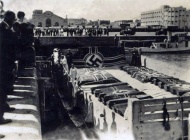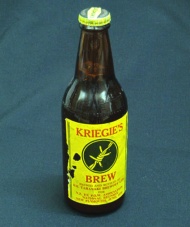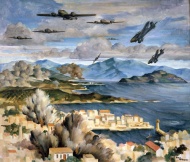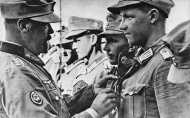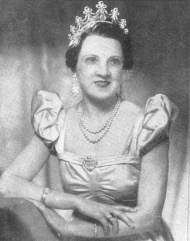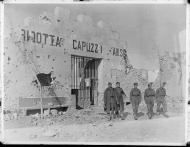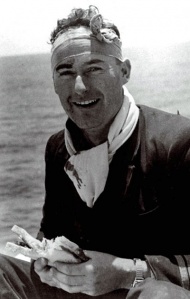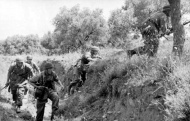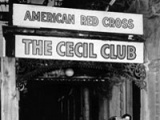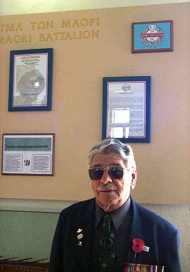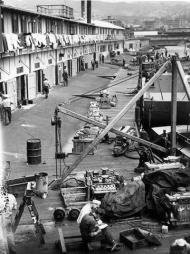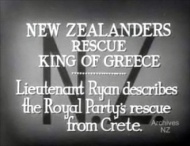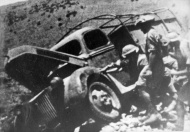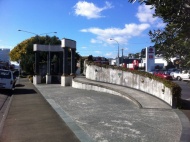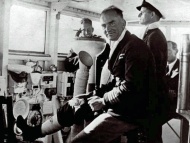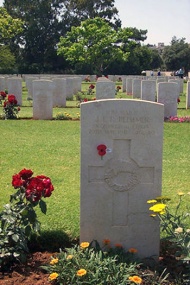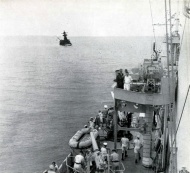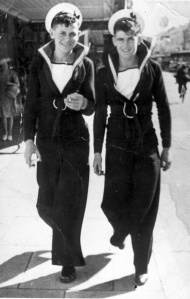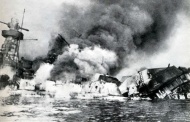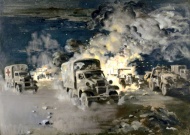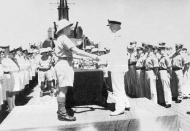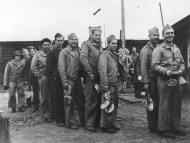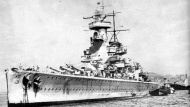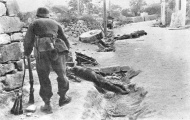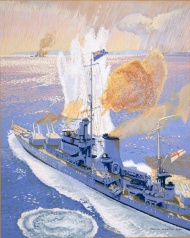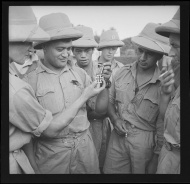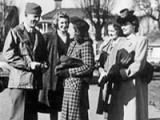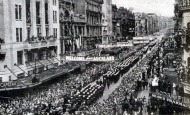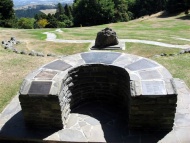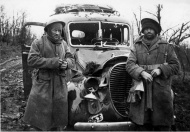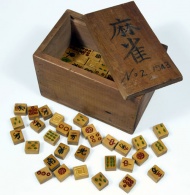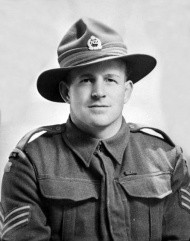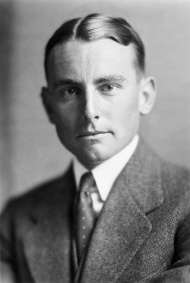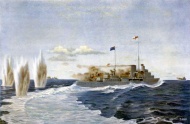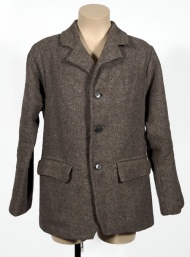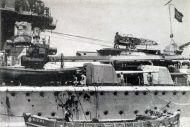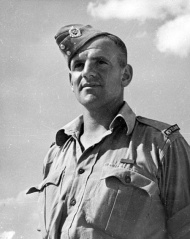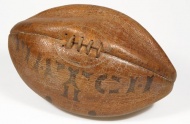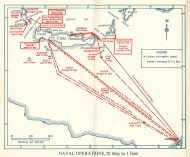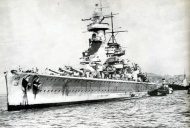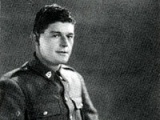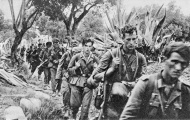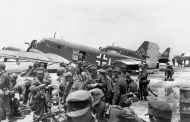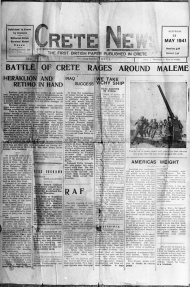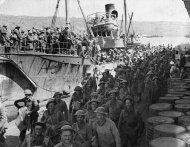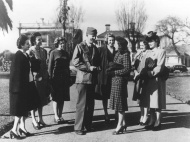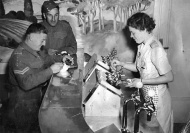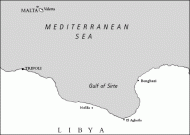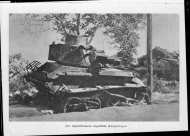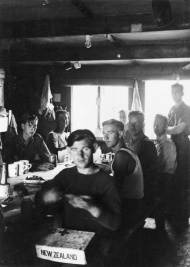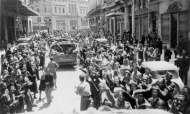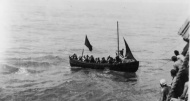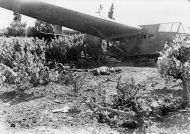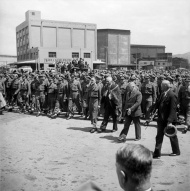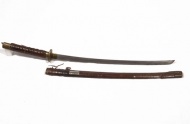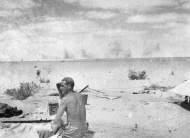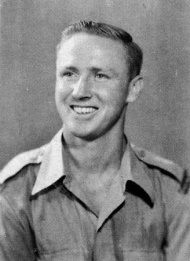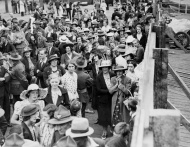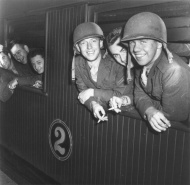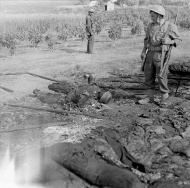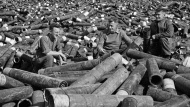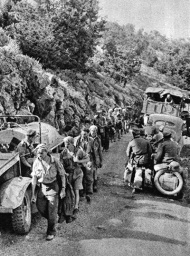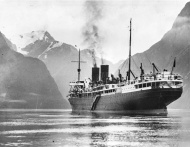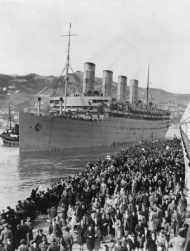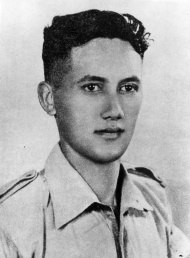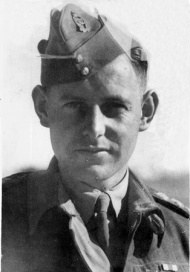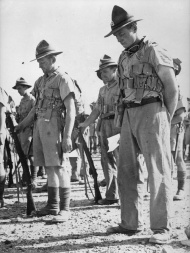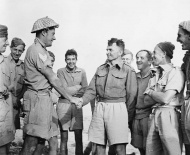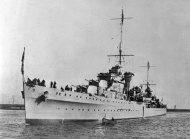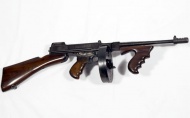Events In History
-
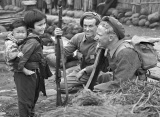 19 March 1946Main body of Jayforce lands in Japan
19 March 1946Main body of Jayforce lands in JapanAbout 4500 New Zealand servicemen arrived as part of a 36,000-strong British Commonwealth Occupation Force that was to work alongside the US military forces that had occupied most of Japan. Read more...
-
 2 September 1945Air Vice-Marshal Isitt accepts Japanese surrender
2 September 1945Air Vice-Marshal Isitt accepts Japanese surrenderAir Vice-Marshal Leonard Isitt added New Zealand’s signature to the Instrument of Surrender between the Allied powers and Japan. Read more...
-
 15 August 1945The war is over! VJ Day
15 August 1945The war is over! VJ DayJapan's surrender following the atomic bombing ofHiroshima and Nagasaki ended the Second World War. More than 200,000 New Zealanders had served during the war and more than 11,500 had died. Read more...
-
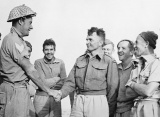 11 May 1945Charles Upham presented with first Victoria Cross
11 May 1945Charles Upham presented with first Victoria CrossNew Zealand’s most-decorated soldier, Charles Upham, received the first of his two VCs – for outstanding gallantry and leadership during the Battle of Crete in 1941 – from King George VI at Buckingham Palace. Read more...
-
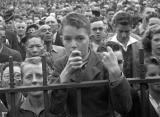 9 May 1945New Zealand celebrates Victory in Europe
9 May 1945New Zealand celebrates Victory in EuropeGermany surrendered on 7 May, New Zealand time, but acting Prime Minister Walter Nash insisted that celebrations wait until after British Prime Minister Winston Churchill officially announced peace at 1 a.m. on 9 May, New Zealand time. Read more...
-
 17 December 1944Major Major, mascot of 19 Battalion, dies of sickness
17 December 1944Major Major, mascot of 19 Battalion, dies of sicknessMajor Major, No. 1 Dog, 2NZEF, a member/mascot of 19 Battalion since 1939, died of sickness in Italy. He was buried with full military honours at Rimini. Read more...
-
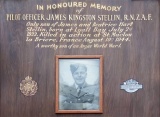 19 August 1944Kiwi pilot's sacrifice saves French village
19 August 1944Kiwi pilot's sacrifice saves French villageAs his damaged Hawker Typhoon fighter-bomber rapidly lost height, Pilot Officer James Stellin struggled to avoid crashing into Saint-Maclou-la-Brière, a village of 370 people. He succeeded, but at the cost of his own life. The villagers gave him a hero’s funeral and have honoured his memory ever since. Read more...
-
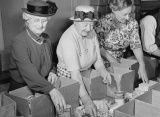 16 August 1944CORSO formed
16 August 1944CORSO formedCORSO was set up to support aid efforts in war-torn nations. It became increasingly involved in the developing world and also spoke out about poverty in New Zealand. Read more...
-
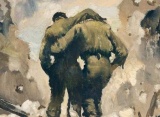 15 March 1944New Zealand forces capture Castle Hill at Cassino
15 March 1944New Zealand forces capture Castle Hill at Cassino6 New Zealand Brigade attacked the Italian town of Cassino as part of the Allies‘ advance on Rome. By the time 2 New Zealand Division was withdrawn in early April, 343 New Zealanders had lost their lives. Read more...
-
 21 January 1944New Zealand and Australia sign the Canberra Pact
21 January 1944New Zealand and Australia sign the Canberra PactThe Canberra Pact was an undertaking by the two countries to co-operate on international matters, especially in the Pacific. Read more...
-
 27 October 1943First opposed New Zealand landing since Gallipoli
27 October 1943First opposed New Zealand landing since GallipoliNew Zealanders of 8 Brigade, 3 New Zealand Division, helped their American allies clear Mono Island in the Solomons of its Japanese defenders. Forty lost their lives in weeks of fierce fighting. Read more...
-
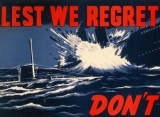 24 May 1943Turning point in Battle of the Atlantic
24 May 1943Turning point in Battle of the AtlanticIn the Battle of the Atlantic, one of the most important campaigns of the Second World War, 24 May 1943 was a crucial date. Thousands of New Zealanders took part in this long and bitter struggle. Read more...
-
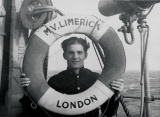 26 April 1943New Zealand ship torpedoed in Tasman Sea
26 April 1943New Zealand ship torpedoed in Tasman SeaLike many New Zealand merchant ships, the Union Steam Ship Company freighter Limerick undertook military missions during the Second World War, carrying munitions, food and equipment between New Zealand, Australia, North America and the Middle East. Read more...
-
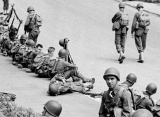 3 April 1943Battle of Manners Street
3 April 1943Battle of Manners StreetSoldiers and civilians slugged it out on the streets of Wellington during the ‘Battle of Manners Street’, the best-known clash between New Zealanders and American servicemen during the Second World War. Read more...
-
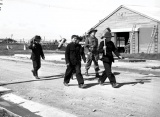 25 February 194349 killed in Featherston POW incident
25 February 194349 killed in Featherston POW incidentJust outside the Wairarapa town of Featherston, a memorial garden marks the site of a Second World War incident that resulted in the deaths of 48 Japanese prisoners of war and one guard. Read more...
-
 11 November 1942Troopship Awatea goes down fighting
11 November 1942Troopship Awatea goes down fightingThe Union Steam Ship Company of New Zealand’s sleek 13,482-ton trans-Tasman liner Awatea, launched in 1936, was one of the finest and fastest ships of its size in the world at the outbreak of the Second World War. Read more...
-
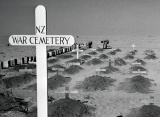 2 November 19422 New Zealand Division leads breakthrough at El Alamein
2 November 19422 New Zealand Division leads breakthrough at El AlameinAt El Alamein in Egypt, 2 New Zealand Division opened the way for British tanks, allowing the Allies to make a breakthrough and force the Axis forces in North Africa to retreat. Read more...
-
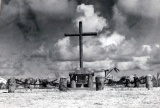 15 October 1942New Zealand coastwatchers executed by the Japanese
15 October 1942New Zealand coastwatchers executed by the JapaneseSeventeen New Zealand coastwatchers and five civilians captured in the Gilbert Islands (now Kiribati) were beheaded at Betio, Tarawa. Read more...
-
 17 August 1942Attack on the Nino Bixio
17 August 1942Attack on the Nino Bixio118 New Zealand prisoners of war died when the Italian transport ship Nino Bixio was torpedoed by a British submarine in the Mediterranean. Read more...
-
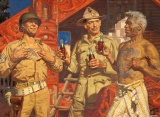 12 June 1942First US troops arrive in Auckland Harbour
12 June 1942First US troops arrive in Auckland HarbourOver the following two years, about 100,000 American servicemen would spend time in New Zealand, which became a rear base for the Allies’ counter-offensive against Japan. Read more...
-
 29 March 1942Nazi sabotage hoax
29 March 1942Nazi sabotage hoaxDuring the Second World War, convicted conman Sydney Gordon Ross duped New Zealand’s intelligence service into believing that Nazi agents were planning to carry out sabotage in New Zealand. Read more...
-
 19 December 1941HMS Neptune lost in Mediterranean minefield
19 December 1941HMS Neptune lost in Mediterranean minefieldIn New Zealand’s worst naval tragedy, the Royal Navy cruiser HMS Neptune struck enemy mines and sank off Libya. Of the 764 men who lost their lives, 150 were New Zealanders. Read more...
-
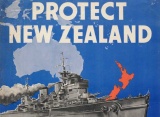 8 December 1941New Zealand at war with Japan
8 December 1941New Zealand at war with JapanThe announcement by the Prime Minister’s Department that New Zealand was in a state of war with Japan followed the surprise attack on the United States naval base at Pearl Harbor, Hawaii. Japan also attacked Hong Kong, the Philippines, Thailand and Malaya. Read more...
-
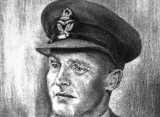 2 October 1941New Zealand pilot saves Scottish village
2 October 1941New Zealand pilot saves Scottish villageIn October 1941, New Zealand Spitfire pilot Carlyle Everiss heroically sacrificed his life to save the Scottish village of Cowie from serious damage. Read more...
-
 20 May 1941German paratroops land on Crete
20 May 1941German paratroops land on CreteThe Battle for Crete raged for 12 days before the Allies were driven off the island. Casualties were high on both sides. More than 650 New Zealanders were killed and 2000 taken prisoner. Read more...
-
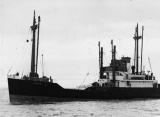 14 May 1941New Zealand minesweeper sunk near Hauraki Gulf
14 May 1941New Zealand minesweeper sunk near Hauraki GulfThe minesweeper HMS Puriri was the second victim of mines laid off the Northland coast by the German raider Orion. Five of its crew were killed. Read more...
-
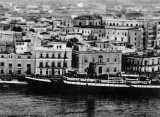 24 April 1941Sinking of the Hellas
24 April 1941Sinking of the HellasDisaster struck during the hurried evacuation of Allied forces from Greece when hundreds of civilians and Commonwealth troops, including New Zealanders, were killed while they were boarding the Greek yacht Hellas at the port of Piraeus, near Athens. Read more...
-
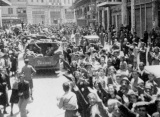 7 March 1941New Zealand troops arrive in Greece
7 March 1941New Zealand troops arrive in GreeceWhen the Germans attacked Greece on 6 April they quickly outflanked the Allied defenders, who were forced into a hurried retreat down the peninsula. Read more...
-
 16 January 1941Women's Auxiliary Air Force founded
16 January 1941Women's Auxiliary Air Force foundedThe Women’s Auxiliary Air Force (WAAF) was formed to enable the Royal New Zealand Air Force to release more men for service overseas during the Second World War. Read more...
-
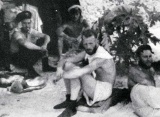 27 November 1940Liner sunk off East Cape
27 November 1940Liner sunk off East CapeThe 16,712-ton New Zealand Shipping Company liner Rangitane was intercepted and sunk 550 km off East Cape, with the loss of 15 lives. Read more...
-
 20 August 1940Turakina sunk by German raider in Tasman
20 August 1940Turakina sunk by German raider in TasmanIt was the first naval battle in the Tasman Sea. The New Zealand Shipping Company freighter Turakina was intercepted and sunk by the Orion nearly 500 km off the Taranaki coast with the loss of 36 lives. Twenty survivors were taken prisoner. Read more...
-
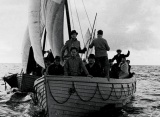 19 June 1940Niagara mined off Northland coast
19 June 1940Niagara mined off Northland coastThe Second World War arrived in New Zealand with a bang when German mines sank the trans-Pacific liner Niagara off Northland’s Bream Head. Read more...
-
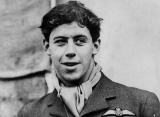 7 June 1940Fighter ace Edgar ‘Cobber’ Kain killed
7 June 1940Fighter ace Edgar ‘Cobber’ Kain killedThe Hastings-born pilot's exploits flying Hurricanes for the Royal Air Force’s No. 73 Squadron in the first year of the Second World War made him a household name. Read more...
-
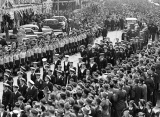 23 February 1940100,000 Aucklanders welcome home HMS Achilles
23 February 1940100,000 Aucklanders welcome home HMS AchillesThe Battle of the River Plate in December 1939 was the Allies’ first naval victory of the Second World War. The involvement of the cruiser HMS Achilles, more than half of whose crew were New Zealanders, was greeted with jubilation in New Zealand. Read more...
-
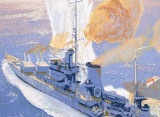 13 December 1939Battle of the River Plate
13 December 1939Battle of the River PlateWhen the cruiser HMS Achilles opened fire on the German pocket battleship Admiral Graf Spee in the South Atlantic, it became the first New Zealand unit to strike a blow at the enemy in the Second World War. Read more...
-
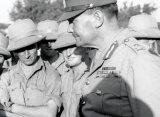 22 November 1939Freyberg given command of 2NZEF
22 November 1939Freyberg given command of 2NZEFBritish-born but New Zealand-raised, Lieutenant-General Sir Bernard Freyberg was a charismatic and popular military leader who later served as governor-general. Read more...
-
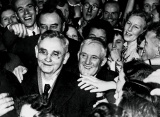 5 September 1939Prime minister declares New Zealand’s support for Britain
5 September 1939Prime minister declares New Zealand’s support for BritainWhen New Zealand declared war on Germany on 3 September 1939, Prime Minister Michael Joseph Savage was recovering from an operation for colon cancer. Acting Prime Minister Peter Fraser issued a statement in his place. Read more...
-
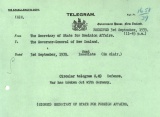 3 September 1939New Zealand declares war on Germany
3 September 1939New Zealand declares war on GermanyAlongside Britain and Australia, New Zealand was one of the first countries to become involved in the global conflict precipitated by Germany's invasion of Poland on 1 September 1939. Read more...
Articles
The Battle for Crete
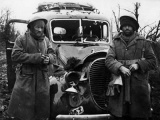
It remains the most dramatic battle ever fought by New Zealand forces. Over 12 brutal days in May 1941 the Allies opposed a massive German airborne assault on the Mediterranean island of Crete. They almost succeeded.
-
Page 2 – Overview
The Battle for Crete in May 1941 is the most dramatic battle in which New Zealand forces have participated. For 12 days, with British, Australian and Greek troops and Cretan
-
Page 3 – The battle: days 1-3
On 20 May 1941 the German attack began, focusing on the airfield at Maleme and the Canea area. Landing among or near concealed Allied defensive positions, the German glider-
-
Page 4 – The battle: days 4-6
On 23 May New Zealand forces retreated from Maleme to the new line at Platanias. Troops stationed in the Galatas-Canea area had a relatively quiet day. So did those at Retimo
-
Page 5 – The retreat: days 7-9
The Germans continued to advance eastwards across the island. British forces withdrew to a line east of Galatas. Freyberg realised that the loss of Crete was inevitable and
-
Page 6 – The evacuation: days 10-12
The first ships left Sfakia for Egypt. The Germans finally entered Retimo, leaving the Australian defenders stranded. The garrison at Heraklion was evacuated by sea. Evacuation
-
Page 7 – Capitulation and capture
The remnants of Creforce surrendered to the Germans. Those taken prisoner at Sfakia were marched back over the White Mountains to a prison camp near Galatas. Others escaped and
-
Page 8 – The controversies
The Battle for Crete is the most contested event in New Zealand's military history. The nature of the battle, with a relatively clear sequence of events leading to an
-
Page 9 – Kiwi stories
Selected audio extracts of New Zealanders involved in the Battle for Crete.
-
Page 11 – Further information
This web feature was originally written by Megan Hutching and Ian McGibbon and produced by the NZHistory team.
US Forces in New Zealand
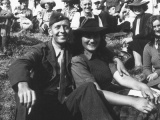
The first American soldiers landed on New Zealand soil in June 1942, beginning an 'invasion' which would have a profound impact on both visitors and hosts over the next 18 months.
-
Page 2 – Overview
Overview of US forces in New Zealand during the Second World War.
-
Page 3 – Arrival
The ‘invasion’ began in Auckland on 12 June 1942, when five transport ships carrying soldiers of the US Army sailed into Waitematā Harbour. Two days later, Marines landed in
-
Page 8 – Economic impact
The presence of thousands of well-paid Americans in New Zealand as part of a large army which needed provisioning sparked a minor economic boom that had some long-term effects
-
Page 10 – The end or a beginning?
The end of the American invasion was a gradual process which started in late 1943. For some New Zealanders it was a relief to see the men go; for others it was an occasion of
Prisoners of War
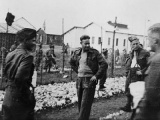
During the Second World War New Zealanders became prisoners of war in large numbers. Most Kiwi POWs were soldiers captured in Greece, Crete and North Africa. In total, more than 8000 were held in captivity - one in 200 of New Zealand's population at the time.
-
Page 2 – Capture
Most of New Zealand's Second World War POWs were captured in the European theatre in the early stages of the war. Only about 100 New Zealand servicemen fell into Japanese hands
-
Page 3 – Incarceration
The incarceration of most New Zealand army POWs began in transit camps where facilities were rudimentary in the extreme. Generally little more than holding pens, they were
-
Page 4 – Daily life
POW camps tended to be rather bleak places. They could not, for security reasons, have trees and other greenery growing in them, although many prisoners did receive seeds from
-
Page 6 – Forced marches
As the war drew to a close, POWs in the more eastern German camps were often gathered together at short notice and marched off under guard in a westerly direction - away
-
Page 8 – Liberation
The prospect of liberation was key to POWs' morale. But a great many had no intention of passively awaiting the arrival of Allied forces, an attitude that was reinforced by the
-
Page 9 – Repatriation
Attention was given to the problem of repatriating POWs long before 1945. A New Zealand repatriation unit was established in the United Kingdom under the command of Major-
-
Page 10 – The camps
A list of prisoner of war camps in which New Zealand POWs were held during the Second World War
-
Page 11 – Further information
This web feature was written by Megan Hutching and Ian McGibbon and produced by the NZHistory team.BooksD.O.W.
VE and VJ days
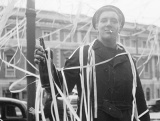
After over five years of rationing and anxiety about loved ones overseas, New Zealanders greeted the coming of peace in Europe in May 1945, and then victory over Japan in August, with understandable relief and enthusiasm.
-
Page 2 – VE Day
Germany surrendered in the early afternoon of 7 May 1945, New Zealand time. The news became known the next morning, with huge headlines in the morning papers. But the acting
-
Page 3 – VJ Day
VJ Day, like VE Day, showed public regulation at work. Again the preparation had been considerable, and this time celebrations went more smoothly
The Merchant Navy
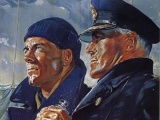
3 September is Merchant Navy Day, which was first officially commemorated in New Zealand in 2010. The date marks the sinking of the first Allied merchant ship in 1939, just hours after the Second World War began. This is the story of the 'fourth service' at war.
-
Page 2 – The longest lifeline
An island nation half a world away from its main trading partner, New Zealand in the mid-20th century was overwhelmingly dependent on sea transport for its prosperity and
-
Page 4 – The Battle of the Atlantic
Although it was waged half a world away, few military campaigns were as vital to New Zealand's interests as the Battle of the Atlantic. A German victory, which would have
-
Page 5 – No grave but the sea
For the Merchant Navy the cost of victory was high: between 1939 and 1945 almost 5000 Allied and neutral merchant vessels (over 21 million tons' worth) were sunk, and around 60
-
Page 6 – Roll of Honour, 1939-45
This roll lists the names of seafarers who died while serving on New Zealand merchant ships and New Zealanders known to have been lost while sailing under the flags of other
D-Day
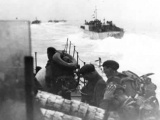
It was one of the largest amphibious landings in history. On 6 June 1944 a huge Allied military machine embarked on the invasion of German-occupied France. Thousands of New Zealand sailors and airmen were on active duty that day.
-
Page 2 – The grand plan
The plans for the Allied invasion of France were conducted in great secrecy and over several months.
-
Page 3 – Supporting acts
Massive supporting actions, including a complex plan designed to fool the Germans, assisted the landings at Normandy.
-
Page 8 – The battle for Europe
The landings on 6 June 1944 were just the first part in a sustained campaign to break the war in Europe. For months after D-Day, planes flew over European cities, and the
The North African Campaign
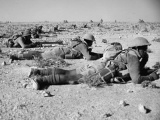
The second battle of El Alamein, which began 70 years ago this month, was the turning point of the war in North Africa. For New Zealand forces, this was longest and most important land campaign of WWII. But victory came at a heavy price: between 1941 and 1943, 14,000 Kiwis were killed, wounded or became prisoners of war.
-
Page 2 – Background
Fighting in North Africa stemmed from the area’s strategic importance to the Commonwealth. Italy’s decision in June 1940 to enter the war on Germany’s side seriously
-
Page 3 – Operation Crusader
As British forces crushed the Italians in Abyssinia, elements of the Deutsches Afrika Korps (German Africa Corps) began arriving in Libya and the 2nd New Zealand Division
-
Page 4 – El Alamein
The New Zealand Division fell back to the Alamein Line, where it took part in the first Battle of El Alamein. They suffered heavy casualties at Ruweisat Ridge and El Mreir
-
Page 5 – Tunisia and victory
The New Zealand Division enters Tunisia fighting fierce battles at Tebaga Gap and Takrouna. In May 1943 Axis forces in North Africa surrender and the New Zealanders begin a
-
Page 6 – The North African Campaign timeline
Timeline showing key events of the Second World War, particularly New Zealand's involvement in North Africa.
-
Page 7 – Kiwi stories
Selected audio extracts of New Zealanders involved in the North African campaign.
The Italian Campaign
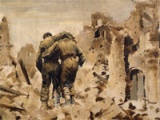
Tens of thousands of New Zealanders fought their way up the boot of Italy from 1943 to 1945 as part of the vast multinational force assembled to roll back Axis aggression in far-flung theatres of war across the globe
-
Page 3 – Into action at the Sangro River
The 'Div' was soon in action at the end of November. The New Zealanders were assigned the task of joining the Allied effort to breach the Gustav Line by attacking its eastern
-
Page 2 – Prelude
The Allied decision to invade Italy arose from a combination of opportunism, misplaced hopes and coalition compromise.
-
Page 4 – Cassino
The Division was to enjoy only a brief respite before being called upon to participate in a new attack on a strong point which would prove the most tragically elusive prize of
-
Page 5 – Faenza, Trieste and home
After a period of rest and recuperation, the 'Div' was back in action again in July as part of the Allied effort to breach the Germans' new so-called Gothic Line running from
-
Page 6 – Italian campaign timeline
A brief outline of the key events of the Italian Campaign, particularly focusing on the involvement of New Zealand.
-
Page 7 – Kiwi stories
Discover the stories of some of the New Zealanders who served in the Italian Campaign, 1943–1945
Second World War - overview

The Second World War was the greatest conflict ever to engulf the world. It took the lives of 50 million people, including one in every 150 New Zealanders, and shaped the world that we have lived in ever since.
-
Page 2 – Fighting for Britain
New Zealand was one of the first countries to become involved in the global conflict precipitated by Germany's invasion of Poland on 1 September 1939. Its 2176-day involvement
-
Page 3 – The Second NZ Expeditionary Force
Strategy determined that New Zealanders involved in combat with Germans would mostly do so at a distance from New Zealand. New Zealand's security, it was accepted, depended on
-
Page 4 – Counting the cost
The Second World War was New Zealand's greatest national effort to date. About 140,000 men and women were dispatched overseas to serve in fighting formations, 104,000 in 2NZEF
-
Page 5 – Opposition to war
Over 800 conscientious objectors were sent to detention camps in New Zealand during the Second World War
-
Page 6 – Second World War timeline
A brief outline of the key events of the Second World War, particularly those involving New Zealand.
-
Page 7 – Further information
This web feature was written by Ian McGibbon and produced by the NZHistory team.LinksOfficial histories of the New Zealand's participation in the Second World War - (NZ
War in the Pacific
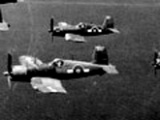
Thousands of New Zealanders fought in the Pacific War, which was sparked by the Japanese bombing of the American naval base at Pearl Harbor on 7 December 1941. It was a conflict fought on a vast scale over huge distances. For the New Zealanders, this was a war fought close to home.
-
Page 2 – The war against Japan
United States President Franklin D. Roosevelt described it as 'a date which will live in infamy' - 7 December 1941, the day the Japanese bombed the American naval
-
Page 3 – Changing fortunes
In 1942 the Battle of the Coral Sea (7-8 May) and Battle of Midway (3-6 June) between the Japanese and United States navies left the United States with superior numbers of
-
Page 5 – Soldier's stories
New Zealanders who served in the Pacific War had diverse experiences. They were involved in fighting in the jungle, some spent time in Japanese prisoner of war camps, others
-
Page 6 – Pacific War Timeline
Key dates for New Zealand military involvement in the Pacific during the Second World War
Māori and the Second World War
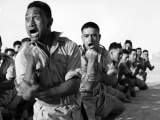
Despite some opposition, nearly 16,000 Māori enlisted for service during the Second World War. By 1945, 28 (Maori) Battalion had became one of New Zealand's most celebrated and decorated units. But Māori contributed to the war effort in many different ways, at home and overseas.
-
Page 2 – Response to war
Māori leaders offered men for both home defence and overseas service, and Māori requests for their own military unit followed, although not all wanted a Māori battalion.
-
Page 3 – Achievements
The 28th (Maori) Battalion established a formidable reputation as one of New Zealand’s finest fighting forces.
Military mascots
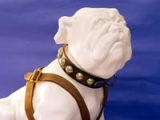
New Zealanders have one of the highest pet-ownership rates in the world. Wartime was no different. Take a tour through this menagerie of military mascots: dogs, cats, donkeys, monkeys, pigs, goats and birds. There's the famous bull terrier Major Major, along with the less well-known, but very cute, slow loris adopted by 1 RNZIR in Borneo.
-
Page 3 – Second World War mascots
Second World War mascots, including the dogs Major Major and Colonel Ben and Rommel the cat
Battle of the River Plate
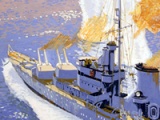
When HMS Achilles opened fire on the German 'pocket battleship' Admiral Graf Spee on 13 December 1939, it became the first New Zealand unit to engage the enemy in the Second World War. More than 80 years later, the Battle of the River Plate still holds a special place in this country’s naval history.
-
Page 2 – New Zealand's naval forces
New Zealand’s naval forces and strategy before the outbreak of the Second World War.
-
Page 3 – The outbreak of war
The outbreak of the Second World War and New Zealand naval involvement in the Battle of the Atlantic.
-
Page 4 – Into the South Atlantic
HMS Achilles joins the Royal Navy's South America Division patrolling the South Atlantic in search of German raiders.
-
Page 5 – The battle
The British cruisers Achilles, Ajax and Exeter engage the German ‘pocket battleship’ Admiral Graf Spee.
-
Page 6 – After the battle
The aftermath of the battle and the return of HMS Achilles to New Zealand.
Royal NZ Navy's Bird-class ships
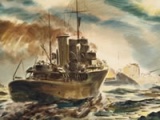
October 2011 marks the 70th anniversary of the formation of the Royal New Zealand Navy. In 1941 the new navy had three brand-new ships – the Moa, Kiwi and Tui – working up or fitting out in Scotland. These little Bird-class minesweepers would see dramatic action in the Pacific War.
-
Page 2 – 'Pocket corvettes'
The Birds were unusual. Although they looked a little like the Admiralty’s Isles-class minesweeping trawlers, their extended forecastles gave them more of a naval look
-
Page 3 – Early wartime duties
When the ships finally arrived at Auckland between April and August 1942, after lengthy voyages, they joined the 25th Minesweeping Flotilla
-
Page 4 – Moa and Kiwi bag a sub
On the night of 29 January Kiwi and Moa were patrolling along Kamimbo Bay, on the north-western corner of Guadacanal when Kiwi detected a submarine
-
Page 5 – The sinking of the Moa
On 7 April 1943, while refuelling from the American oil barge Erskine M. Phelps at Tulagi Harbour, in the Solomons, the Moa came under attack from Japanese aircraft
-
Page 7 – The Tui goes hunting
The minesweeper Tui’s turn to claim a scalp came in August 1943
-
Page 6 – Peacetime years
The RNZN downsized after the war, although it remained much bigger than the pre-war New Zealand Division.
-
Page 8 – Further information
Links and books relating to New Zealand Bird-classs minesweepers
The Second World War at home
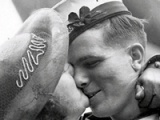
Nearly one and half million people spent the Second World War at home in New Zealand. For most, life changed: families and relationships were disrupted, government directives controlled people’s lives and, for many, there was the constant threat of terrible loss.
-
Page 2 – It's war again
‘The war to end all wars’
-
Page 3 – War work
Ballot boys
-
Page 4 – Challenges
Feeling threatened'You wondered whether you'd go bush'From early in 1940, New Zealanders began to live in fear of attack or invasion, first by the Germans and later by the
-
Page 5 – Hello and goodbye
Yankee visitors
-
Page 6 – In dissent
New Zealanders who publicly opposed the war were in a very small minority. They came from two main groups: communists and pacifists.
-
Page 7 – Back home
Peace at lastTwo days stand out as signposts on the path to peace in 1945. The first was VE Day – Victory in Europe – declared on 8 May, a day after Germany surrendered.
-
Page 8 – Interviewees
This feature is based on the book by Alison Parr, Home: civilian New Zealanders remember the Second World War, published by the Penguin Group in 2010.
-
Page 9 – Further information
This feature was compiled by Imelda Bargas and produced by the NZHistory team.
HMNZS Leander
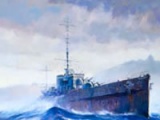
When the Royal New Zealand Navy came into being on 1 October 1941, its main combat units were two Leander-class cruisers: Achilles and Leander. Although its early war was quieter than the Achilles, the Leander was to see dramtic action in the Pacific War.
-
Page 2 – Leander-class light cruisers
Facts and stats about Leander-class light cruisers
-
Page 3 – Leander goes to war
By mid-1940 Leander was escorting convoys in the Red Sea and Aden areas. In between escorting merchant ships, the cruiser further pummelled the Italian submarine
-
Page 4 – Pacific attack
After some early successes, Leander’s war came to an end when it was hit by a long-range Japanese torpedo
-
Page 5 – Recovery and repair
Leander was hit just abaft the ‘A’ boiler room. Almost 500 kg of high explosive killed everyone in the boiler room. The blast, venting up through the boiler room duct, blew
-
Page 6 – Last days
Leander never fought under the New Zealand ensign again and was eventually scrapped in 1949
-
Page 7 – Further information
Links and books relating the to the HMNZS Leander
The Royal New Zealand Navy
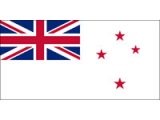
Seventy years old in October 2011, the Royal New Zealand Navy is today an integral part of the New Zealand Defence Force. But its 1941 establishment was the result of a long process of naval development.
-
Page 5 – Second World War
On 1 October 1941 an order-in-council changed the name of the New Zealand Division of the Royal Navy to Royal New Zealand Navy.
Links - military history
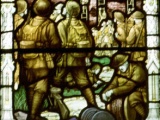
Links to military resources including personnel records, medal winners and war graves.
- Page 4 - Second World War
Anzac Day
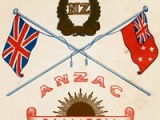
First observed in 1916, Anzac Day - 25 April - commemorates those killed in war and honours returned servicemen and women. The ceremonies held at war memorials around the country, and in places overseas where New Zealanders gather, are rich in tradition and ritual.
- Page 6 - Another war and peaceAnzac Day came to have a wider focus and the commemorations became more popular in the years after the Second World
First World War art

During the First World War official and unofficial New Zealand war artists produced a wide range of works depicting this country's war effort. These works later became part of New Zealand's National Collection of War Art.
- Page 4 - Establishing a collectionFollowing the end of the war, attention turned to where New Zealand's official First World War art collection would be stored. Plans for a National War Memorial Museum in
The Battle of Britain
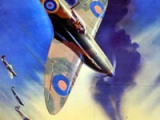
2011 marks the 71st anniversary of the Battle of Britain, which was fought between July and October 1940. New Zealanders played a key role in this vital struggle, flying the Hurricanes and Spitfires of Fighter Command, or serving in other roles in the air, at sea and on the ground.
- Page 9 - Roll of honourList of New Zealand aircrew who died while serving with RAF Fighter Command during the Battle of Britain, July-October 1940. Includes link to full list of those who
Biographies
-
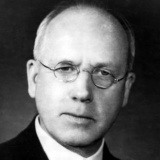 Fraser, Peter
Fraser, Peter
Peter Fraser, New Zealand’s wartime PM, led the nation for nine years. Respected rather than loved like Savage, many experts rate him our finest PM.
Read more... -
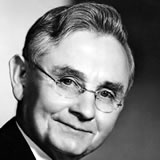 Savage, Michael Joseph
Savage, Michael Joseph
Michael Joseph Savage, New Zealand’s first Labour PM, was probably also it's best-loved. His avuncular image hung in the homes of the Labour faithful for decades.
Read more... -
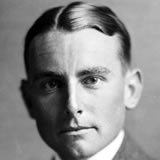 Cox, Geoffrey Sanford
Cox, Geoffrey Sanford
Just how did a boy born in Palmerston North come to witness at first hand the impact of Stalinism, the rise of Hitler and the Spanish Civil War?
Read more... -
 Freyberg, Bernard Cyril
Freyberg, Bernard Cyril
A First World War hero and commander of the 2nd New Zealand Expeditionary Force, Bernard Freyberg proved to be a charismatic and popular military leader who would later serve a term as Governor-General
Read more... -
 Kain, Frances Ida
Kain, Frances Ida
As commander of the Women's Auxiliary Air Force (WAAF), Kitty Kain was one of New Zealand's most senior women military leaders during the Second World War.
Read more... -
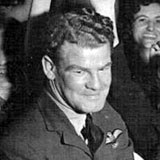 Deere, Alan Christopher
Deere, Alan Christopher
Alan Christopher Deere is possibly New Zealand’s most famous fighter pilot of the Second World War. He was also one of the luckiest – surviving several near death experiences to become one of the outstanding pilots of the Battle of Britain.
Read more... -
 Clouston, Wilfrid Greville
Clouston, Wilfrid Greville
Wilfrid Greville Clouston was one of the first New Zealand air aces of the Second World War. He survived the Battle of Britain only to spend the majority of the war in a Japanese prisoner of war camp.
Read more... -
 Herrick, Michael James
Herrick, Michael James
Michael James Herrick was one of five brothers to serve during the Second World War. He flew with distinction during the Battle of Britain and in the Pacific before being killed on air operations over Denmark.
Read more... -
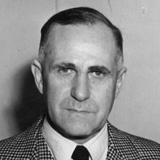 Kippenberger, Howard Karl
Kippenberger, Howard Karl
Leader of the 5th New Zealand Infantry Brigade in the North African desert campaigns of 1942 and 1943, Kippenberger was New Zealand’s most popular military commander, and perhaps its most talented.
Read more...
Related keywords
- north african campaign
- trains
- italian campaign
- battle of cassino
- shipping
- navy
- japanese
- royal new zealand air force
- war memorials
- auckland city
- WW1
- war art
- art
- museums
- peter mcintyre
- art history
- wellington city
- furlough
- WW1 home front
- fundraising
- home front
- newspapers
- engineers
- bridges
- nurses
- hataitai
- niue
- malayan emergency
- royal new zealand navy
- avondale
- anglican
- maori
- women
- mascots
- burnham
- coastwatchers
- pacific war
- howard kippenberger
- devonport
- oral history
- air force
- geoffrey fisken
- hmnzs leander
- vietnam war
- rationing
- sport
- athletic park
- american forces
- dunsandel
- paekakariki
- tarawa
- tanks
- DDay
- royal air force
- WW2 stories
- stephen roskill
- royal navy
- casualties
- ormond burton
- conscientious objection
- methodism
- americans
- singapore
- battle of the river plate
- HMS Achilles
- peter fraser
- maori battalion
- canada
- italians
- puriri sinking
- whangarei
- children
- painting
- disasters
- bernard freyberg
- graf spee sinking
- poster
- recruitment
- featherston
- roadside stories
- maps
- war brides
- merchant navy
- seafarers
- cold war
- communism
- VE day
- walter nash
- battle for crete
- victoria cross
- leonard trent
- edward puttick
- amberley
- charles upham
- sydney ross
- robert semple
- corso
- international relations
- prisoners of war
- jack hinton
- greece
- albert martin
- transport
- economy
- venereal disease
- submarine
- bren guns
- Maori MPs
- governor-general
- wellington harbour
- el alamein
- australia
- war objects
- lloyd trigg
- keith elliott
- marines
- pahiatua
- polish
- film
- james ward
- pauatahanui
- links
- parades
- cyril newall
- communities
- paratroops
- police
- sonny sewell
- guadalcanal
- port nicholson
- erwin rommel
- commonwealth war graves commission
- drink
- milk bars
- health
- field ambulance
- food
- germany
- james stellin
- radio broadcasts
- rugby
- winston mccarthy
- parliament
- shipwrecks
- VJ day
- hamilton
- leisure
- cashmere hills
- womens war service auxiliary
- tui
- WAAF
- kitty kain
- photography
- wilfred weakly
- clive hulme
- denny hulme
- press
- journalism
- geoffrey cox
- spanish civil war
- michael joseph savage
- reginald miles
- james hargest
- wairarapa rugby
- battle of britain
- wilfrid clouston
- aviation
- suffrage 125
- edgar kain
- fascism
- niagara
- publishing
- michael herrick
- prostitution
- pacifism
- archibald barrington
- roll of honour
- red cross
- weapons
- jayforce
- air transport
- maori in war
- lyttelton
- korean war
- christmas
- monowai
- anne frank
- united states
- aquitania
- alan deere
- john denvir
- frenku rabel
- anzac day
- protest
- public holidays
- RSA
- religion
- riots
- ngarimu
- egypt
- MPs
- prime ministers
- trade unions
- united nations
- maleme airfield
- timeline
- swimming
- normandy landings
- labour party
- great depression
- bastion point
- apirana ngata
- te puea herangi
-
Main image: Train at El Alamein station

